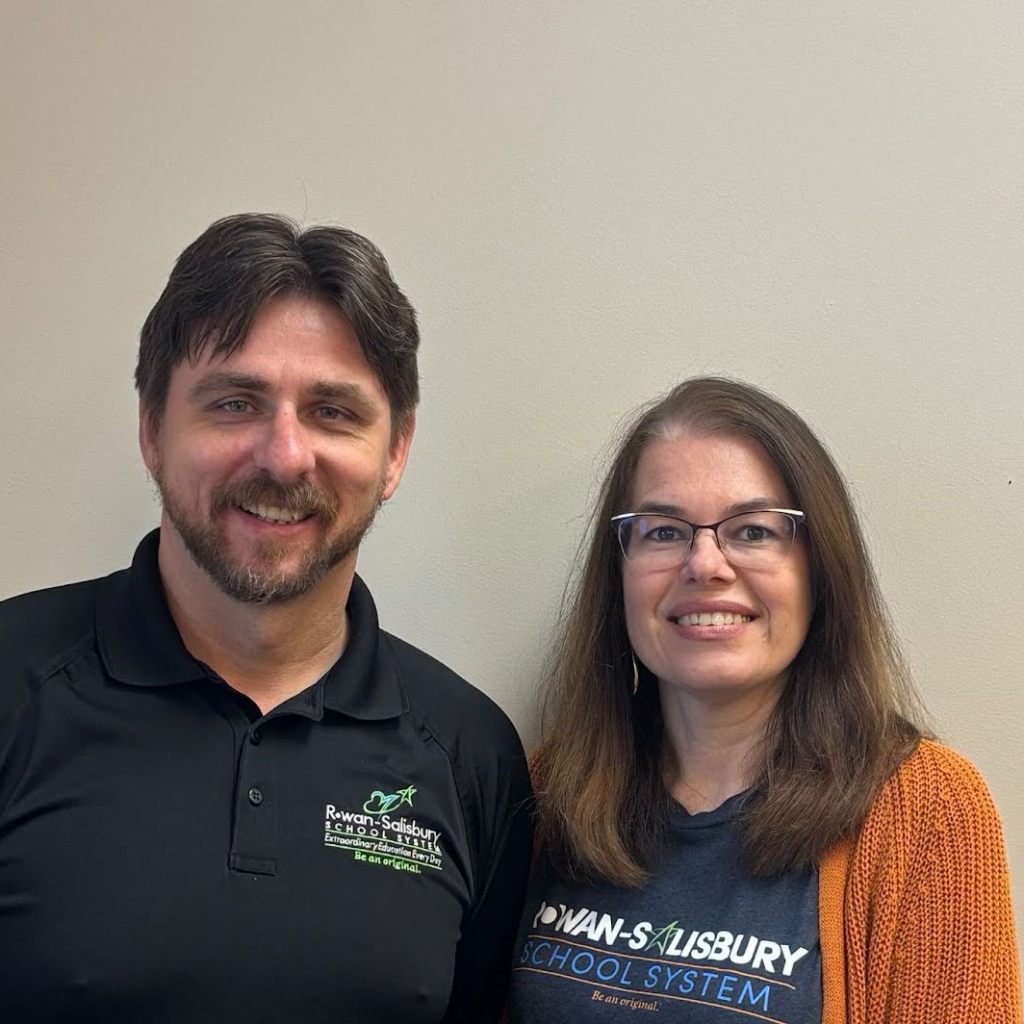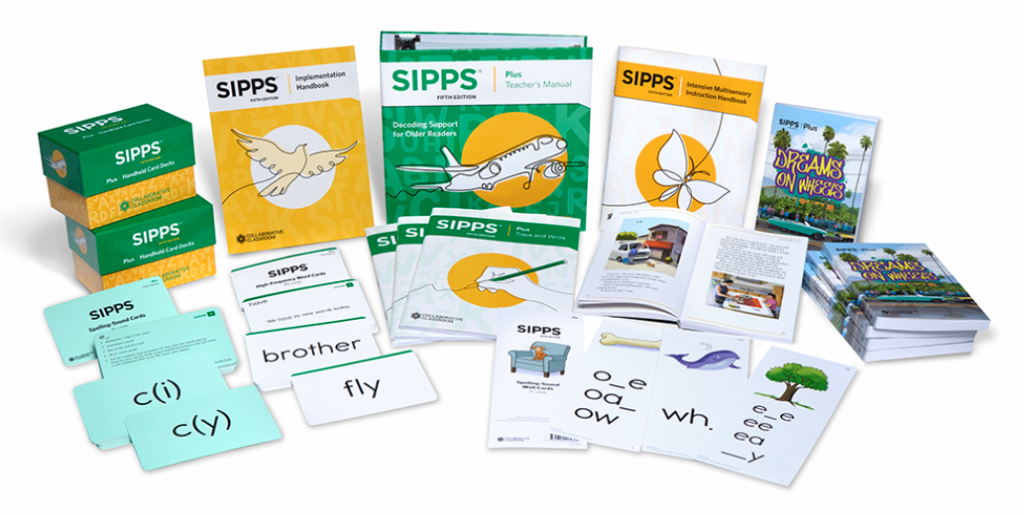
When Matt Harriger and Alison Augustson, the MTSS Coordinators for Rowan Salisbury Schools in North Carolina, analyzed their district literacy screening data, it was clear many students in grades 4–8 continued to struggle with foundational reading skills despite current interventions.
Since these skills are not typically emphasized in core ELA in grades 4–8, they needed an efficient way to close these gaps and help students access grade-level content. In this interview, Matt and Alison describe how they are supporting these highest-risk older readers with SIPPS®.
Tell us a little about yourselves, your district, and the students that you serve.
As MTSS Coordinators for Rowan Salisbury Schools in North Carolina, Matt works with the secondary schools and Alison works with the elementary schools to help them build systems, analyze data, and support students. Matt served as a classroom teacher and an assistant principal prior to this role. Alison has been a special education teacher, a diagnostician, and an MTSS coach prior to this role.
Rowan Salisbury Schools is located in central North Carolina in Rowan County. The district has just over 18,000 students enrolled across 32 schools. Rowan Salisbury is North Carolina’s first “Renewal” School District, which gives the district charter-like flexibility with calendar, personnel, and budgets.
Focus on Highest-Risk Students in Grades 4–8
What challenge were you facing? Why did SIPPS seem like a good fit to address this need?
When analyzing our district literacy screening data, we found many students in grades 4–8 continued to struggle with foundational reading skills—phonological awareness, decoding, and sight word recognition—despite current interventions.
These skills are not typically emphasized in core ELA at these grade levels, so we needed a more efficient way to close these gaps quickly and help students access grade-level content.
Over multiple years, our highest-risk students showed limited progress, indicating that our interventions were not effective enough. We also faced the challenge of providing age-appropriate instruction and materials for older students who needed support with word recognition.
SIPPS stood out as a strong solution. Its structured routines and frequent, interleaved practice accelerate learning–critical for students already behind.
SIPPS® stood out as a strong solution. Its structured routines and frequent, interleaved practice accelerate learning—critical for students already behind.
Unlike our current programs, SIPPS includes clear placement tests, mastery checks, and instructional guidance, making it easier for teachers to deliver targeted support. Additionally, its decodable readers are designed to look like novels, making them more appropriate and engaging for older students.
Together, these features addressed our key challenges and made SIPPS a promising choice for improving foundational literacy outcomes.

Making Decisions, Choosing to Pilot
What were some key ingredients/planning decisions that set you up for success as you launched your implementation?
To support a successful SIPPS implementation, our district literacy team began the 2024–25 school year by meeting regularly to explore solutions to foundational reading challenges. Once we identified SIPPS as a promising fit, we developed a phased rollout plan.
We started with a pilot in two Rowan Salisbury Schools—one elementary (grades 3–5) and one middle (6th grade)—with trained teachers launching SIPPS in October. This allowed us to gather both implementation feedback and student data to inform broader adoption.
During the pilot phase, we prioritized getting SIPPS Plus and Challenge kits to all elementary schools, focusing on older struggling readers. Some elementary schools also began using SIPPS for grades 2–3. In middle schools, we equipped four schools with kits and designated implementers.
To prepare staff, we spent the first semester offering professional learning opportunities before full implementation. With support from Collaborative Classroom, we created a SIPPS Professional Learning landing page with virtual trainings, recordings, and asynchronous resources. We also coordinated closely with schools to identify implementers and organize materials and licenses.
Our aim was for implementation to begin after mid-year (MOY) data collection, giving staff time to learn the routines. While some schools started earlier and others later, this flexible timeline supported readiness.
Now, with initial implementation underway, our focus is on helping teachers internalize SIPPS instructional routines to build confidence and consistency for the year ahead.

Early Data Informing Next Steps
What initial impacts has SIPPS had on your teachers and students? What’s next for your implementation?
Early data from our two Rowan Salisbury pilot schools showed promising results. On the mid-year (MOY) screening, all students participating in SIPPS demonstrated gains in foundational reading skills, particularly in reading accuracy. At that point we did not see as much increase in reading rate. We just recently gathered end of year screening data, and we are now seeing some increase in reading rate too. This is especially true for our schools that have been implementing longer.
Teacher feedback is still being gathered, but initial observations highlight a common challenge: managing pacing within the 30-minute instructional block. Some teachers are finding it difficult to complete all routines in time, often due to excessive teacher talk. A key SIPPS principle is that students should carry the cognitive load, with teachers prompting and guiding rather than overexplaining. This is an area we need to continue to work on with implementers. Some of our implementers have also expressed a need for more instructional routine modeling. This could be accomplished through face-to-face training, where they can continue to see and practice the routines.
Looking ahead, our next steps include using the SIPPS Observation Tool for Leaders to support consistent implementation and fidelity across schools. We also plan to build in more opportunities for students to practice reading outside the SIPPS block to help improve fluency and reading rate, complementing the accuracy gains we’re already seeing.
Additionally, we plan to offer some opportunities for SIPPS-trained district leaders to model the instructional routines in classrooms to continue building teacher capacity.
Recommendations Based Upon Results
What thoughts or insights would you share with a district that is looking for ways to address the needs of older striving readers?
We recommend finding a solution, like SIPPS, that helps older striving readers close foundational reading skill gaps as quickly as possible so they can access texts.
We think a multicomponent intervention program designed to help accelerate learning can help do this. Take the time to provide professional learning before starting implementation and don’t try to rush implementation. Map out what you want to accomplish (implementation plan) and ensure you are getting feedback from your schools throughout. Understand that teaching foundational reading skills, especially using a program, involves more than the explicit instruction.
Older readers must have time in text to practice reading and applying newly learned concepts. It’s not something that will just happen in 30 minutes a day. That has to be part of implementation planning. Upon reflection, we think we probably should have considered this more when we started. We would also recommend providing face-to-face training in the early implementation stages, in addition to virtual learning opportunities based on our implementer feedback.
Related:
How Age-Appropriate Texts Help Older Striving Readers Succeed
A Coach’s Perspective: How SIPPS Plus Supports Older Striving Readers
Get SIPPS for Older Readers Sample Lessons
Download lessons, text excerpts, placement assessments, and the SIPPS brochure.
